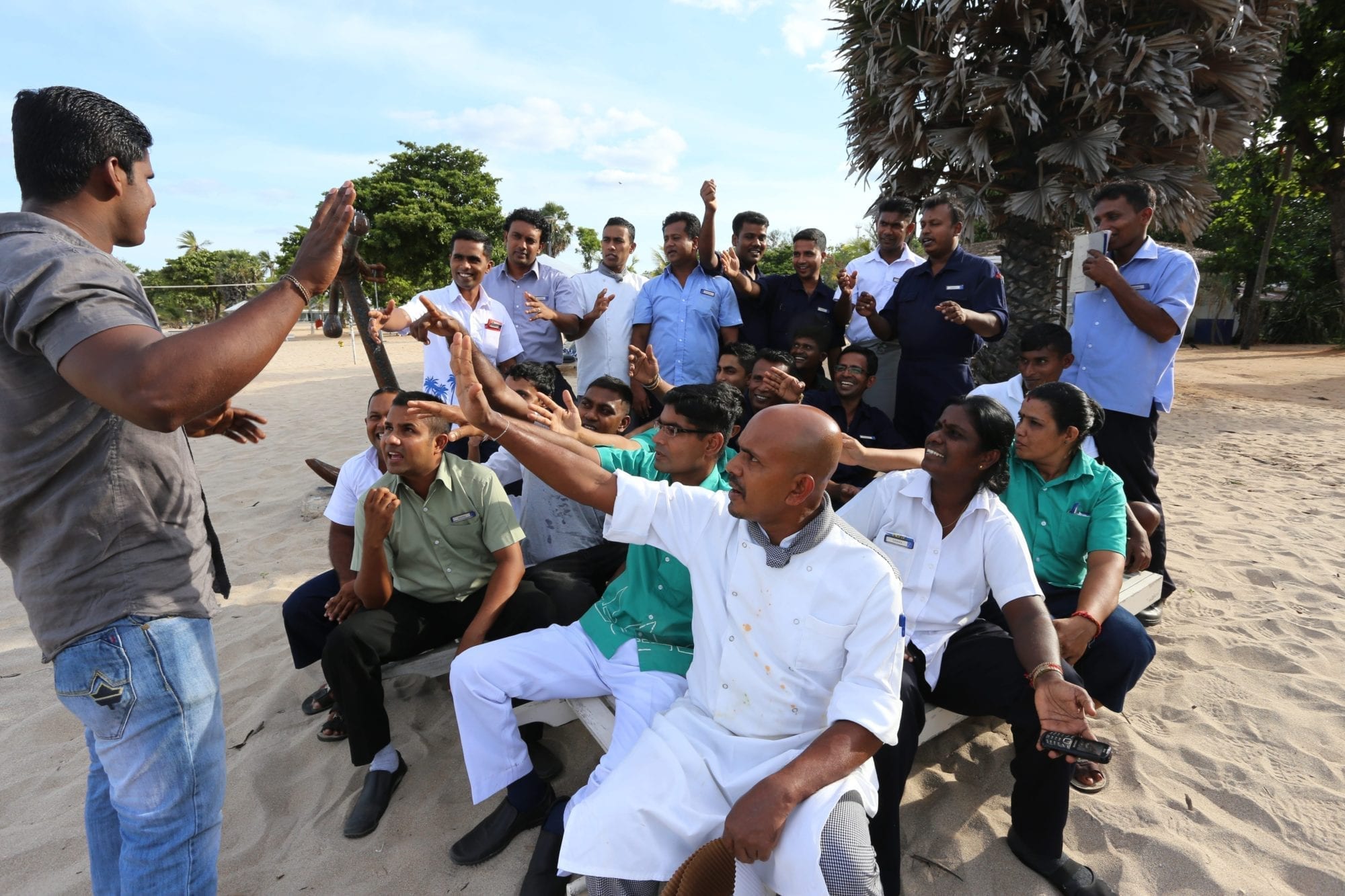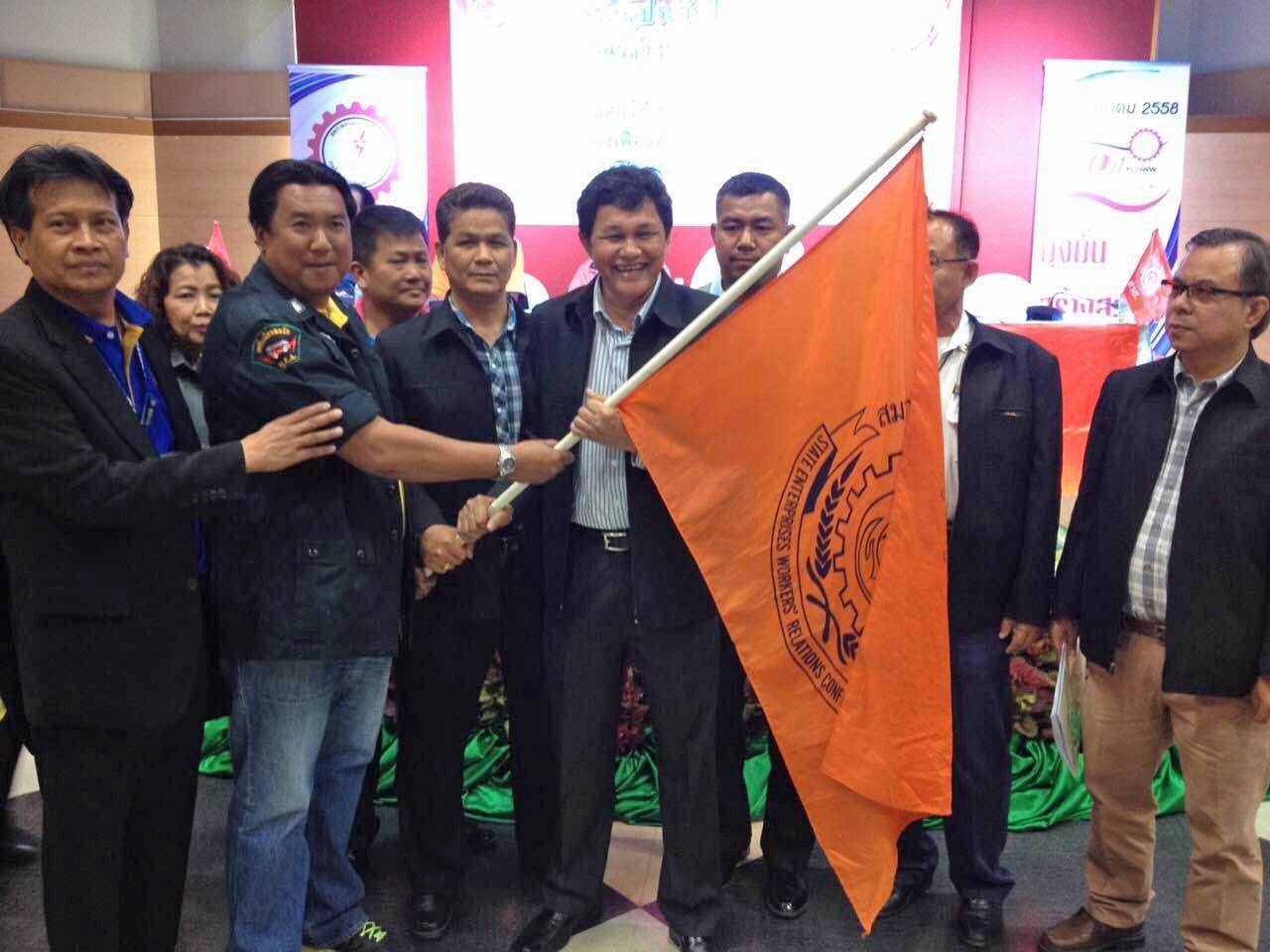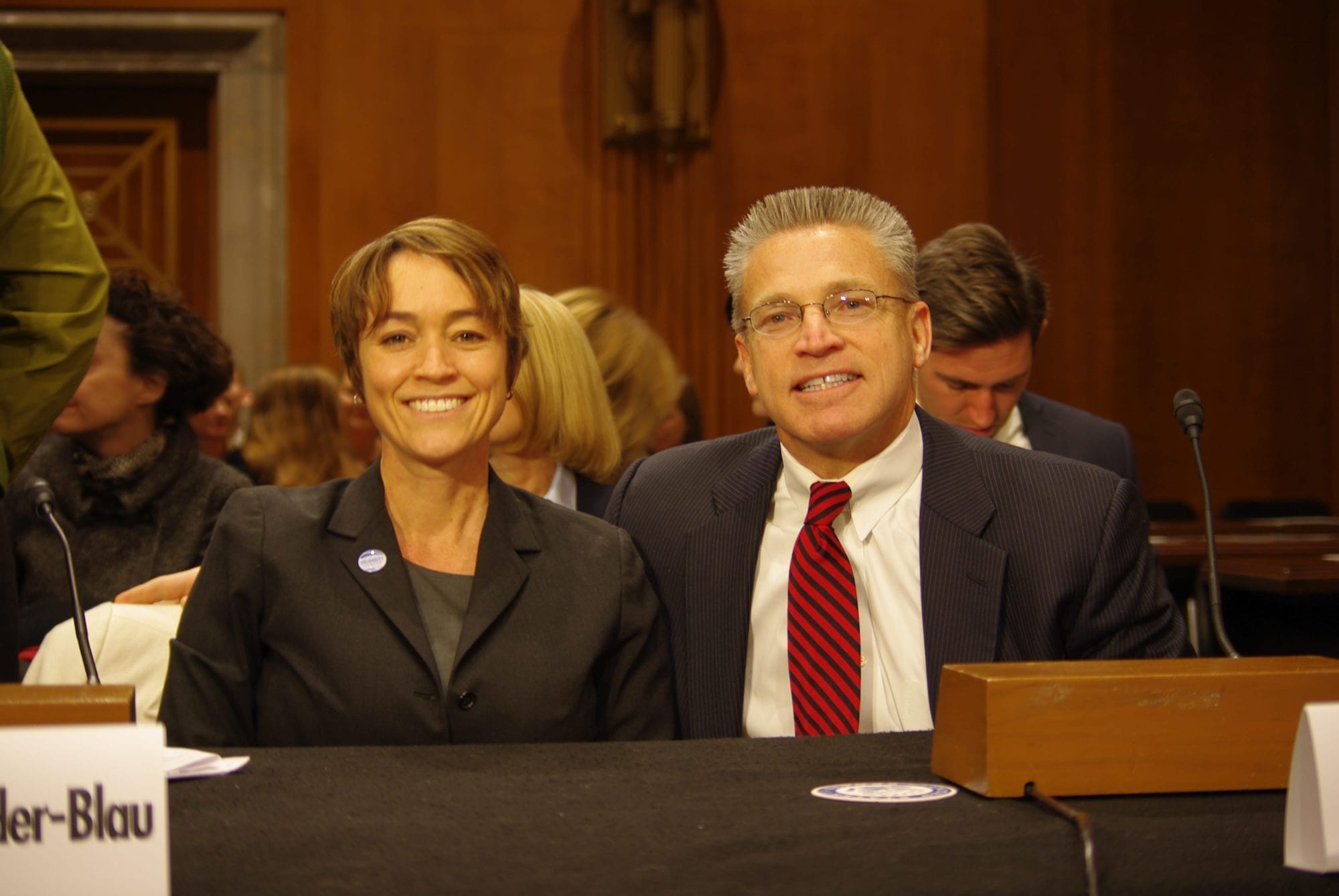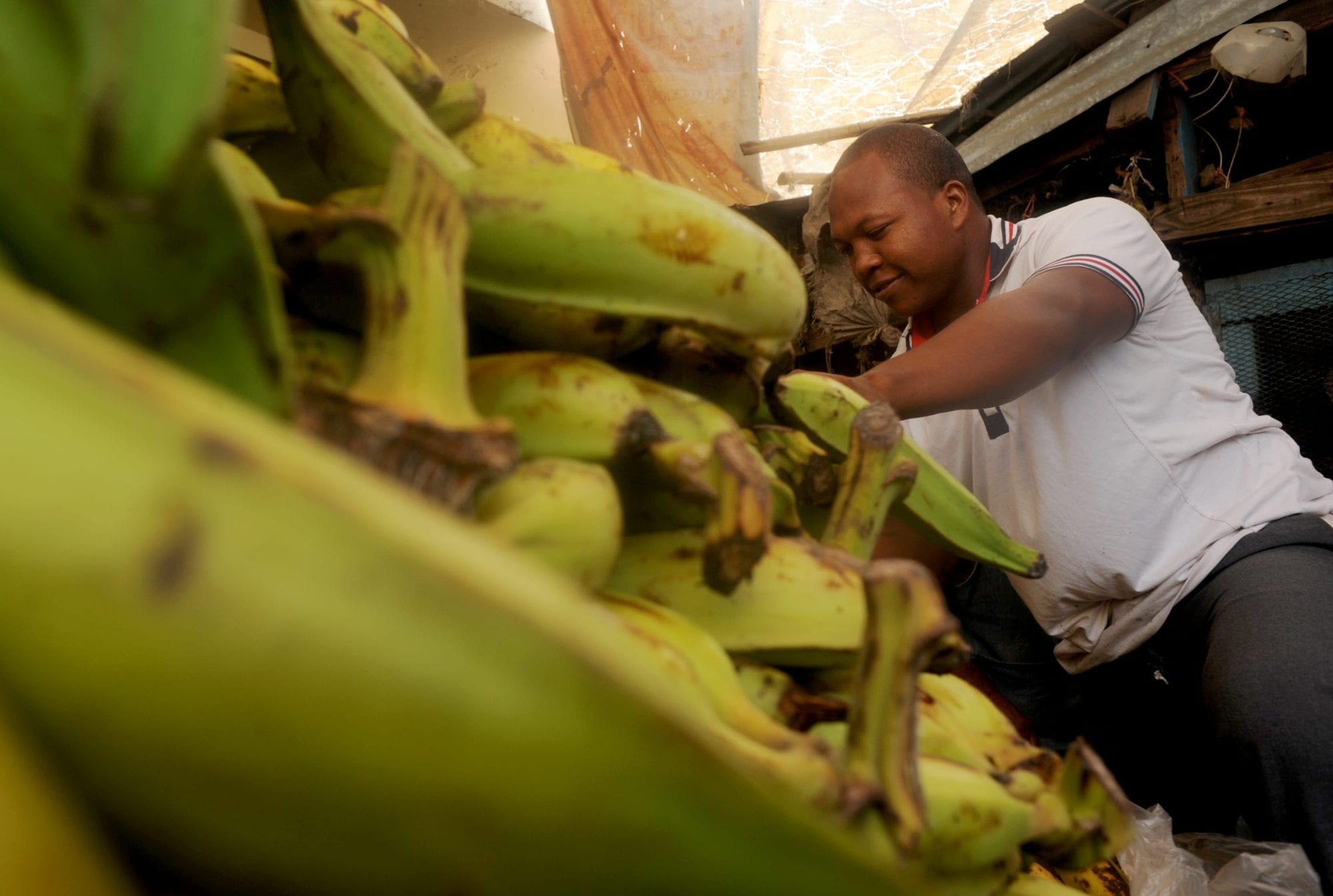
Feb 11, 2015
In Sri Lanka, where the union movement faces challenges familiar to many union activists around the world—a shift from industrial to service jobs and a related decline in union membership—strategic online outreach is drawing young workers and expanding union membership.
Launched in 2013, the website Wedabima (“workflow” in Sinhalese), offers an interactive platform for workers to share comments, learn about union-related workshops and access a labor perspective on daily news unavailable in the mainstream press. The site also has mobilized workers to action—after Wedabima raised concern over the potential for a memorandum of understanding between Sri Lanka and China to weaken labor laws in Sri Lanka, workers and their unions joined to bring the issues to national attention. As a result, the Sri Lankan government has asked unions to submit an analysis of a potential bilateral agreement. The site, now in Sinhalese, will expand to Tamil in coming months.
“We are able to reach a vast audience we weren’t able to before,” says Mohamed Sha, a lawyer and worker rights activist who helped launch the project with the Solidarity Center in Colombo, Sri Lanka’s capital. The Wedabima and related Facebook site draw thousands of visitors, nearly all of whom work in the service sector, a rapidly growing industry where job growth is outpacing the country’s traditional export manufacturing sector.
Making unions attractive to young workers in Sri Lanka’s booming tourism industry is especially key, says Sha, because national income from tourism is on track to overtake the garment sector, which now makes up a large percentage of Sri Lanka’s export earnings. Another goal involves empowering current union members to take a more active role in their unions. Wedabima staff interviews lower-level leaders and posts these video or written interviews on the site, raising their profile to the extent that several are now well-known as leaders in their unions.
The website’s latest feature is geared toward the more than 2 million Sri Lankans who work abroad. The site provides migrant workers, who work in a wide variety of jobs, with contact information for the Embassy of Sri Lanka and other organizations that can assist migrant workers in countries where the majority are employed, such as in Qatar, Saudi Arabia and Jordan. The site also includes information about their legal rights in each country. Sha says the site will also be linked with a national radio program for migrant workers to expand resources and outreach available to workers.
Building a website does not guarantee an audience, and Sha says that an essential component of drawing workers to the new site involved hands-on outreach to the Asia Pacific Network, an intergovernmental group whose young, tech-savvy members helped spread the word about Wedabima’s resources. Those resources also include the latest music downloads, entertainment news and even recipes—features that bring visitors back to the site even when they are not looking for labor-related information.
With its many features and platforms, such digital outreach aims for a very traditional goal:
“We’re trying to cultivate activists,” says Sha.

Feb 9, 2015
The dynamic Thai union activist Sawit Kaewvarn last week was overwhelmingly elected general secretary of the General Assembly of the State Enterprises Workers’ Relations Confederation (SERC), Thailand’s largest trade union organization.
In a letter to Kaewvarn, congratulating him on his election, Solidarity Center Executive Director Shawna Bader-Blau said that “we have tremendous respect for the solidarity and perseverance you and your colleagues and their families have demonstrated during the past three years.”
Kaewvarn’s hard work and leadership “on behalf of all workers, including migrant workers, is inspiring to all of us,” Bader-Blau wrote.
In 2009, Kaewvarn led Thai railway workers on a protest against unsafe working conditions, following a deadly train derailment. The State Railway of Thailand then dismissed several executive committee members of the State Railway Union of Thailand (SRUT). Railway strikes are illegal in Thailand, a law that the International Labor Organization (ILO) says violates freedom of association.In 2011, the State Railway of Thailand dismissed additional executive committee members, including Kaewvarn.
Because Thai law prohibits workers who are not actively employed from union membership, Kaewvarn could no longer serve as SRUT general secretary or as SERC leader. Last year, Kaewvarn and the other workers were reinstated, allowing him to run for union office.
Their reinstatement followed years of legal battles. Last year, the Labor Relations Committee of the State Railway of Thailand decided in favor of the 12 workers, saying they had “good intentions” in calling out safety issues. However, the committee upheld court decisions requiring Kaewvarn and the other members to pay a 15 million baht ($450,000) fine, plus 7.5 percent annual interest, and none were given back pay.
Further, Kaewvarn and the others who were dismissed still face possible legal charges because the Supreme Court is considering legal charges against them filed by the State Railway of Thailand. The decision could take years, and the workers are demanding the company drop the lawsuit.
In December 2010, the National Human Rights Commission of Thailand found that the State Railway of Thailand violated freedom of association. Despite the commission’s report, the Central Labor Court in 2011 upheld the dismissals, ordered the fines, and gave the state railway permission to dismiss additional executive committee members, include Kaewvarn.
Union members say accidents in the state railway system continue, mostly recently on Friday, when a freight car ploughed into buffers at a station. No one was injured.

Feb 4, 2015
Understanding the link between worker rights violations and human trafficking is the key to ending modern slavery, Solidarity Center Executive Director Shawna Bader-Blau testified today on Capitol Hill.
“Most modern slavery today is, in fact, forced labor,” Bader-Blau told the U.S. Senate Committee on Foreign Relations. “Trafficking for labor exploitation is far more prevalent than sex trafficking globally, accounting for 68 percent of trafficked people.” (Watch a video of the full hearing.)
Bader-Blau and other expert witnesses at the hearing, “Ending Modern Slavery: What is the Best Way Forward?” discussed actions and policies to help end human trafficking, debt bondage and other forms of modern slavery in supply chains around the world, including in the United States.
The vast majority of the almost 21 million people in forced labor globally are exploited in the private economy, Bader-Blau said in oral remarks and testimony submitted for the record. Illegal profits made from the use of forced labor worldwide is $150 billion per year, “exceeding the GDP of many countries.”
Instead of shackles and chains, workers are now enslaved through threats, debt and other forms of economic coercion, she said.
“We must move beyond the notion that modern “slavery is all about bad individuals doing bad things to good people,” Bader-Blau said. “We must address what one leading global expert on the international law of human trafficking, calls the ‘underlying structures that perpetuate and reward exploitation, including a global economy that relies heavily on exploitation of poor people’s labor to maintain growth and a global migration system that entrenches vulnerability and contributes directly to trafficking.’”
Bader-Blau said that based upon more the Solidarity Center’s more than 20 years of experience in the areas of child labor, migrant worker exploitation and supply chain accountability, the following steps are essential to ending human trafficking:
- Reform unsafe migration practices, which includes regulating labor recruiters, many of whom manipulate and deceive workers for profit, and banning recruitment fees, which is a primary source of debt bondage and forced labor.
- End impunity for labor traffickers. Forced labor is pervasive around the world because employers who engage in modern slavery face few consequences.
- Make it impossible for governments to allow forced labor and for companies to get away with it, including down their supply chains. Many countries with significant labor trafficking problems continue to receive trade preferences from the U.S. government, said Bader-Blau.
- Promote worker-driven solutions. Workers are key to eradicating forced labor and trafficking in supply chains. They see abuses or may themselves be exploited. First-hand reporting of abuses and exploitation by workers, unions and rights organizations shines a light on abusive practices long before a third party decides to take a look.
The other witnesses included Gary Haugen, president of the International Justice Mission; David Abramowitz, vice president of Policy and Government Relations at Humanity United; James Kofi Annan, founder of Challenging Heights, a child labor rescue organization in Ghana; and Shandra Woworuntu, a trafficking survivor.
Read Bader-Blau’s full testimony.

Feb 3, 2015
A coalition of worker and human rights organizations, including the Solidarity Center, is urging the U.S. State Department to maintain Uzbekistan’s rank at the bottom of its “Trafficking in Persons” report when it is released this year. (Read the full document.)
“In 2014, the government of Uzbekistan forced more than a million citizens to work in the cotton fields under threat of penalty, for its benefit, and as a matter of state policy,” the groups write in a 15-page document detailing the Uzbekistan government’s coercion of public servants and other workers—including children—to toil in cotton fields.
The document notes that at least 17 people died due to unsafe working conditions during last fall’s harvest. Workers forced to pick cotton were not given any time off—including weekends and holidays. Organizations monitoring the harvest reported that workers were provided with no protective gear, such as gloves.
Public organizations, including schools, were required to provide between 30 percent and 60 percent of their staff for the duration of the harvest, and in some cases, up to 80 percent of their staff. Children often had no classes during these weeks because teachers were working in the fields. Clinics and hospitals had few or no medical personnel.
Many employees were threatened with loss of employment, loss of utilities and other public services, social exclusion, fines, administrative harassment, and criminal prosecution if they did not participate in the cotton harvest, the report states.
The 2014 Trafficking in Persons report gave Uzbekistan a “Tier 3” ranking, a designation that indicates a country is not complying with the U.S. Trafficking Victims Protection Act’s minimum standards nor making attempts to do so. The coalition says that maintaining the Tier 3 ranking is essential to convey to the Uzbekistan government the need to end forced labor.
A Tier 3 ranking makes countries liable to sanctions, which could include the withholding or withdrawal of U.S. non-humanitarian and non-trade-related assistance.
The coalition further notes that “the government of Uzbekistan’s use of forced labor to produce cotton is supported by its denial of fundamental rights of association, freedom of press and due process to enable its use of forced labor to produce cotton.”
The 2014 Trafficking in Persons report found that Uzbekistan’s “government-compelled forced labor of men, women, and children remains endemic during the annual cotton harvest….There were reports that some children aged 15 to 17 faced expulsion from school for refusing to pick cotton.”
Uzbekistan also was at the bottom of the 2014 Findings on the “Worst Forms of Child Labor” report released in October by the U.S. Labor Department.

Jan 29, 2015
Amparo Lara sells plantains in San Cristobal’s Municipal Market, vying for customers along with dozens of other vendors selling mangoes, guavas and a range of vegetables and herbs along with services, such as shoe repair.
The increasing lack of full-time jobs around the world has forced many working people like Lara to seek a living in the precarious informal economy. These market vendors, domestic workers, pedicab drivers and day laborers work for meager wages in jobs unregulated by safety and health standards and typically have no access to pensions, sick leave or worker compensation.
[portfolio_slideshow id=2803]
The Solidarity Center helps workers in the informal economy come together to gain the knowledge and confidence to assert their rights and raise living standards. In 35 countries, we provide trainings and programs to help precarious workers better understand their rights, organize unions to mitigate job vulnerabilities, and learn to bargain for improved conditions and wages.
In the Dominican Republic, where a thriving informal economy includes both Dominicans and Haitians, the Solidarity Center has mobilized many of these workers, forming an organization where they can better stand up for their rights and improve their wages and working conditions.
Through the Féderacion Nacional de Vendedores de los Mercados (FENAVEMER), street sellers like Lara have a collective voice on the job, enabling them to better seek their share of the country’s economic prosperity.





